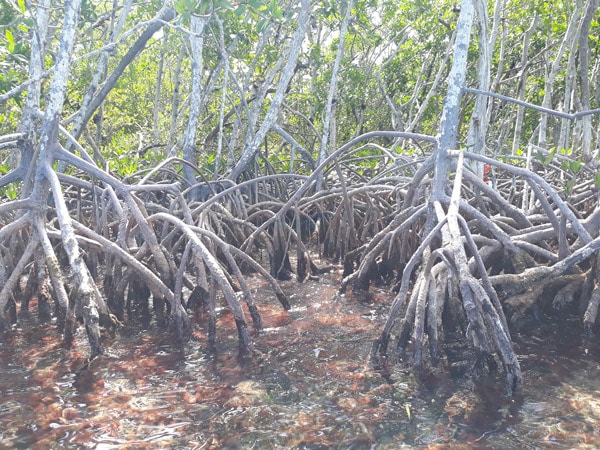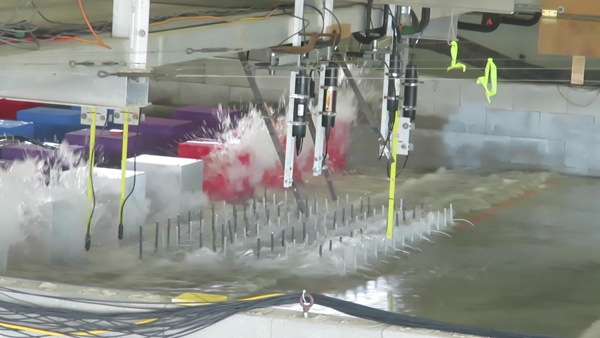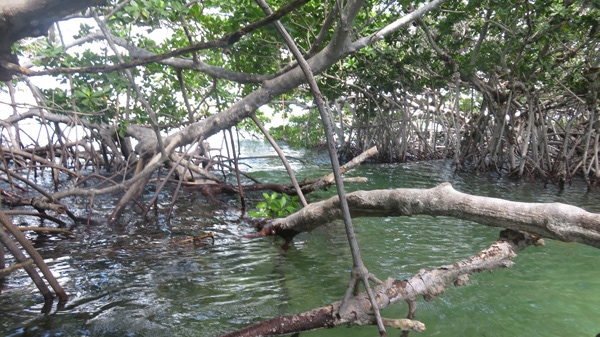As an undergraduate student at the University of Florida, Dr. Tomiczek’s interests in geotechnical engineering and fluid mechanics, plus her curiosity about how structures were impacted by hurricanes, led her to focus on coastal engineering. Tori’s experience doing field work in New Jersey after Hurricane Sandy in 2012 reinforced her belief in the importance of protecting our coastlines, and her observations following Hurricane Irma in 2017 led to her groundbreaking work on the important role of mangroves in protecting coastal shorelines. Today, Dr. Tomiczek is an Assistant Professor in the Naval Architecture and Ocean Engineering Department at the United States Naval Academy.

Islamorada, FL, USA.
Natural features, such as mangrove trees and forests, can provide shoreline protection with their root systems, which trap sediments and sand, helping to prevent shoreline erosion. During extreme weather events, these plant systems dampen waves and reduce the associated energy in the water. In turn, impacts to inland areas can be reduced. These ecosystems also provide other environmental services such as storing carbon and providing habitat for fish.

Tori and her colleagues have conducted lab and field tests to better understand the hydrodynamic effects of mangroves. She is currently working with colleagues at the US Army’s Engineer Research Development Center to build large-scale, physical models that will provide more insight into how waves are transformed by mangrove forests. She hopes this work will inform robust design guidance for Corps Districts, coastal managers, community planners, coastal waterfront property owners and other coastal stakeholders who are interested in using natural systems for coastal resilience. Tori believes that the Engineering With Nature initiative is a “fantastic way to spread awareness and improve the general understanding of how we can use these systems.” She also sees value in using these natural and nature-based features as ‘stand-alone’ projects and in tandem with conventional infrastructure – a spectrum of nature-based solutions that will improve coastal resilience in the US and around the world.






